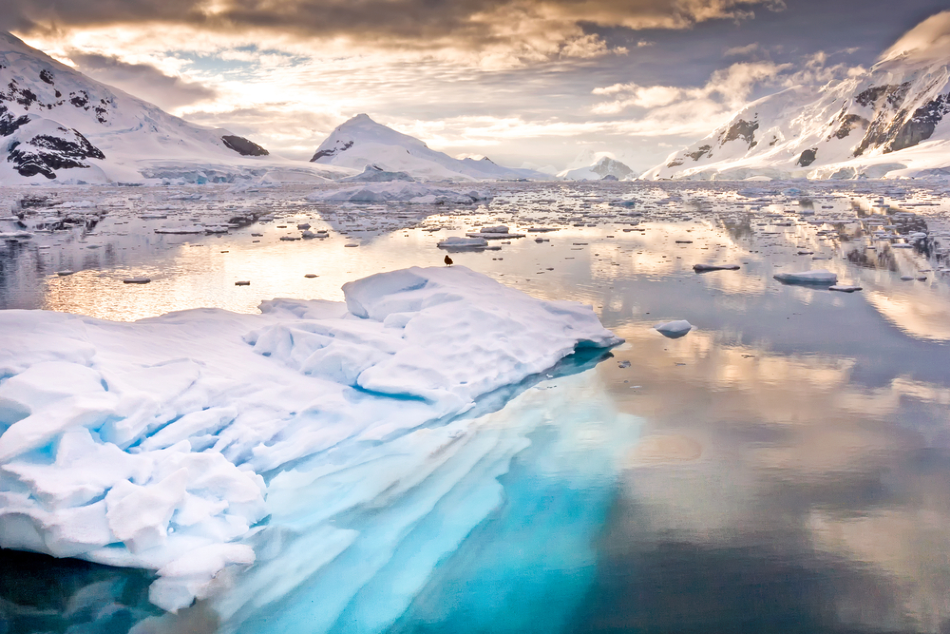Antarctica is a frozen desert continent located south of the Antarctic Circle. It is mostly uninhabitable with a total land area of 14 million km2 of which only 280,000 km2 is ice-free. The continent experiences extremely low temperatures that vary according to elevation, latitude, and distance from the ocean. It is considered to be the coldest and driest continent in the world.

Image Credit: Wim Hoek/Shutterstock.com
There are no indigenous inhabitants in Antarctica; however, it hosts about 4000 scientists and ship crew from several countries working in both permanent and summer-only research stations.
The Antarctic Treaty System
Although there is no formal government, Antarctica is governed by the Antarctic Treaty System (ATS), which has been in force since 1961. As of April 2010, there are 48 treaty member countries. The GDP (PPP) per capita in this region is $1.12346. This continent is currently dominated by scientific activities rather than commercial undertakings.
The treaty led to the signing of the Protocol on Environmental Protection to the Antarctic Treaty (an addition to the treaty), also known as the Madrid Protocol. The protocol was signed in Madrid in 1991 and will be reviewed again in 2048. During the review process, any changes to the protocol will require at least a 75% vote from the consultative parties.
Overview of Resources
Experts believe that mineral and metal resources are likely to be available in Antarctica. Known metalliferous fold belts that are found in Australia, Africa, and South America seem to have continuations in this continent according to the general principles of plate tectonics.
The possible resources include silver, copper, gold, nickel, platinum, iron ore, chromium, cobalt, molybdenum, zinc, manganese lead, titanium, nickel, and uranium. Coal and hydrocarbons have been located in minimal non-commercial quantities. All these resources are yet to be exploited.
Mineral Deposits
Because the geology of Antarctica is known in-depth, the prediction of the existence of large mineral deposits is quite certain. These claims are based on the geological similarities between areas of Antarctica and rich mineral regions in South America, South Africa, and Australia and the configuration of Gondwana during Mesozoic times.
The Witwatersrand beds in South Africa which are rich in gold might correspond to the region in Antarctica called Queen Maud Land. The Andes mountain range, rich in copper deposits, spreads southward through the Scotia Arc into the Antarctic Peninsula. Wilkes Land might parallel south-western Australia’s gold producing greenstone belts and platinum intrusions.
Metals
Mining experts state that the Antarctic Peninsula has some copper-bearing plutons that have precise similarities to the Andean porphyry copper bodies.
Fossil Fuels
According to geologic structure and geophysical evidence, observations have indicated the possible presence of petroleum reserves off the coast of Antarctica. This is especially in the thick sedimentary basins of the Filchner Ice Shelf, Ronne Ice Shelf, Amery Ice Shelf, The Ross Sea and Ice Shelf, and the Weddell Sea.
Similarly, there is widespread belief among the mining community that hydrocarbons are also present in Antarctica. This is because hydrocarbons have been found along the Atlantic coasts of South America and Africa, the south coast of Australia, and the east coast of India, indicating the possibility of similar deposits along the coasts of Antarctica.
Coal has been found in the Transantarctic Mountains and Prince Charles Mountains. However, the quality of coal discovered in the Transantarctic Mountains was low.
Investment
The Convention on the Regulation of Antarctic Mineral Resources Activities (CRAMRA) Treaty was signed in 1988 by the ATS member nations to regulate and define a responsible approach to future mineral exploration activities in the continent.
The UK, Japan, and the USA are currently arguing against a permanent ban on mining. With mineral and fuel resources depleting in other parts of the world, China and Russia have expressed their interest in exploring the region for minerals and fuel.
Without this ban on mining, most mining experts agree that Antarctica is a very inhospitable and expensive place to conduct any mining-related activities.
Other issues that hamper efforts toward mineral extraction in Antarctica are as follows:
- Need for suitable mining technology
- A wealth of minerals easily available in other parts of the world
- Resistance from environmentalists such as Greenpeace and World Wide Fund for Nature
- Antarctica's distance from industrialized areas
- Transportation costs
- Extremely dangerous terrain
Companies such as ArcelorMittal plan to construct a mine in the Arctic Circle in 2013. The success of this company in that region would allow for more deliberations about the Antarctic Circle. With Russia already exploring the Arctic, mineral exploration in the Antarctic does not seem impossible.
Whether Antarctica becomes a 'World Park' or a hub of mineral exploitation remains to be seen.
Disclaimer: The Author of this article does not imply any investment recommendation and some content is speculative in nature. The Author is not affiliated in any way with any companies mentioned and all statistical information is publically available.
References and Further Reading
Disclaimer: The views expressed here are those of the author expressed in their private capacity and do not necessarily represent the views of AZoM.com Limited T/A AZoNetwork the owner and operator of this website. This disclaimer forms part of the Terms and conditions of use of this website.